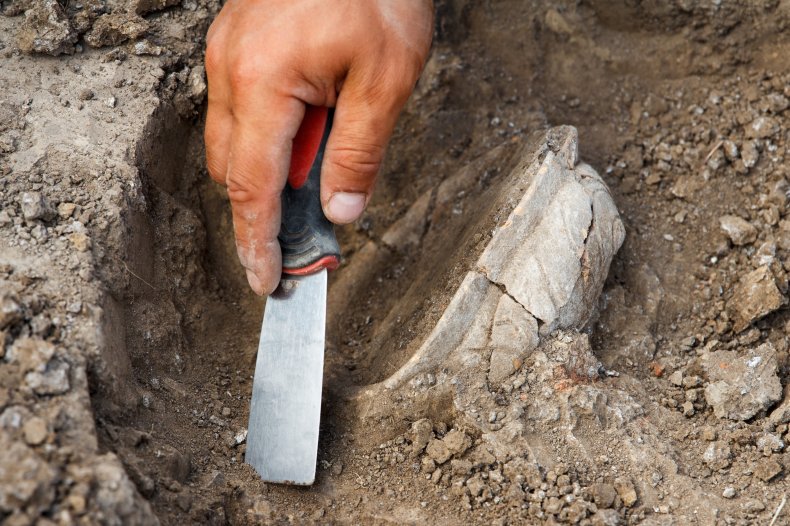Archaeologists have discovered ancient underground galleries at a site high in the Peruvian Andes mountains.
Researchers made the find near a lagoon located at an altitude of more than 11,200 feet above sea level, El Dominical de Panamericana reported. The body of water lies a few miles northeast of the city of Huari in Peru's Ancash region.
It is believed that the subterranean galleries, created with stone blocks, could be as old as the pre-Hispanic "Chavín" culture that existed in Peru thousands of years ago.
The Chavín culture was among the most notable civilizations of ancient Peru, flourishing between around 900 B.C. and 200 B.C., although it has earlier origins, according to the Encyclopedia Britannica.

In this period, the highly developed culture's influence spread throughout the northern and central parts of what is now Peru.
The most important archaeological site of this culture is Chavín de Huántar, located in the Andean highlands of the Ancash region at an elevation of more than 10,400 feet.
Chavín de Huántar contains ruins and artifacts associated with this culture, although it is not clear if it served as its center or birthplace.
Nevertheless, the archaeological site is one of the earliest and best-known from Peru's pre-Hispanic period. Given its historical importance, Chavín de Huántar was designated a UNESCO World Heritage Site in 1985.
The central building at Chavín de Huántar is a huge temple complex constructed of stone blocks that is decorated with elaborate artworks.
"Its appearance is striking, with the complex of terraces and squares, surrounded by structures of dressed stone, and the mainly zoomorphic ornamentation," the UNESCO description of the site reads.
"Chavin was a ceremonial and pilgrimage center for the Andean religious world and hosted people from different latitudes, distances and languages."
The temple complex contains interior galleries, which are similar to those that have recently been discovered at the site near Huari, albeit on a larger scale.
In making the latest discovery, the archaeologists were guided by an elongated vertical stone known as a huanca.
Huancas were considered sacred by the ancient peoples of the Andes and they served several functions, as well as having multiple symbolisms. These stones were worshipped by pre-Hispanic cultures, who conducted rituals around them and left offerings.
Archaeologists said the ancient galleries likely date to around 700 B.C. It is not yet clear what the purpose of the galleries was, but at Chavín de Huántar, these structures had ceremonial functions.
The identity of the people responsible for constructing the galleries at the lagoon site also remains unknown, but researchers are conducting studies to shed light on this question.








